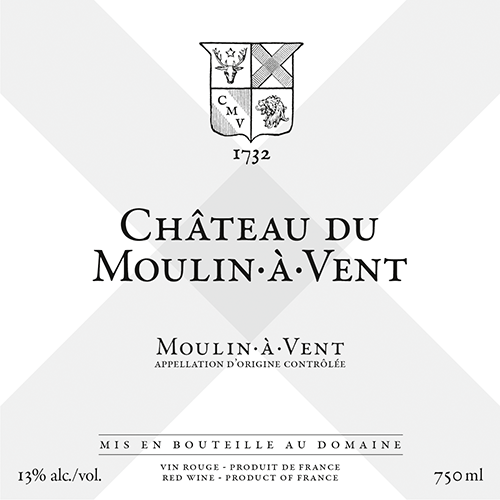
Château du Moulin-à-Vent
Moulin-à-Vent
This flagship wine is produced from selections of the harvest from three top terroirs of Moulin-à-Vent, all located near the fifteenth century windmill at the heart of the Moulin-à-Vent appellation. Delicious ripe red fruit, great structure and lift, it showcases the cru of Moulin-à-Vent in a glass.
This is a blend of the Château’s top three sites: Moulinà-Vent, ‘Les Thorins’ and ‘Les Caves’. The 60 year old vines are planted at altitudes between 240-280 meters with a predominantly southeastern exposure, in granite soil rich in iron oxide, copper and manganese.
- Region
- Bourgogne
- Appellation
- Beaujolais
- Sub-Appellation
- Moulin-à-Vent AOP
- Varietal Composition
- Gamay
- Aging
- 9 months in 40% oak barrels and 60% stainless steel, then 9 months in stainless-steel tanks once blended.
- Alcohol
- 13.06%
A handsome, deep red color with purple tints and lovely aromas, with perfectly mature red and black fruit, hints of spice and floral notes of rose, peony and violet. Good body with fine tannins and good length. Rich, opulent and complex, finishing on a spicy note.
Vinous
92 Points
2022
"The 2023 Moulin-à-Vent comes from the three lieux-dits that encircle the famous windmill. There are pretty redcurrant and strawberry scents on the nose, with touches of pencil shavings and undergrowth percolating through with time. The palate is medium-bodied with fine tannins, a keen line of acidity, a little tartness toward the finish and a spicy aftertaste."
— Neal Martin, 2025




